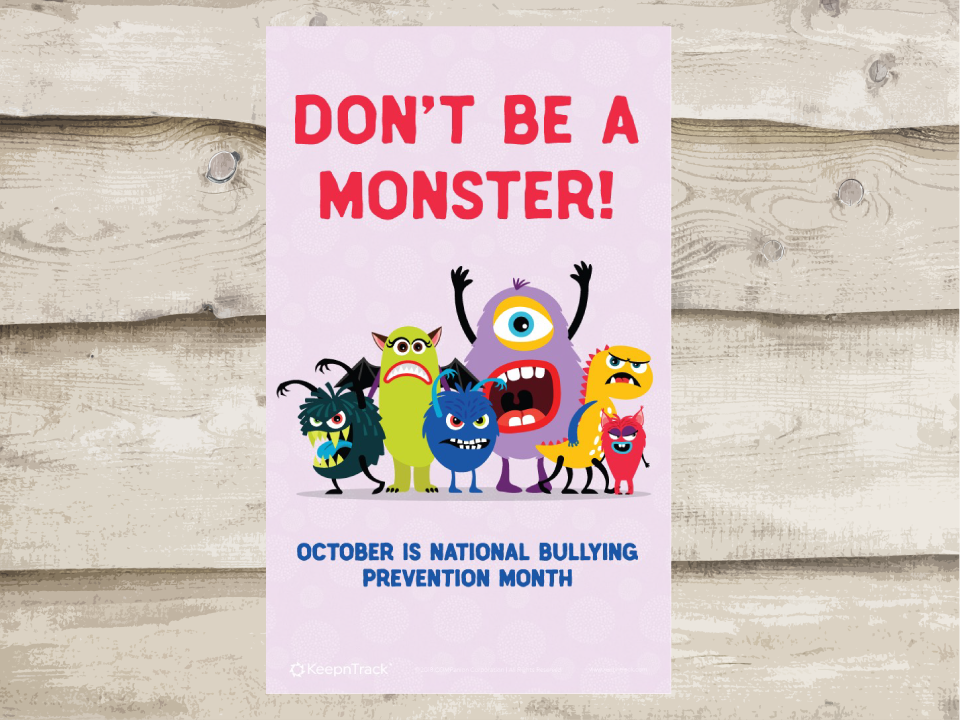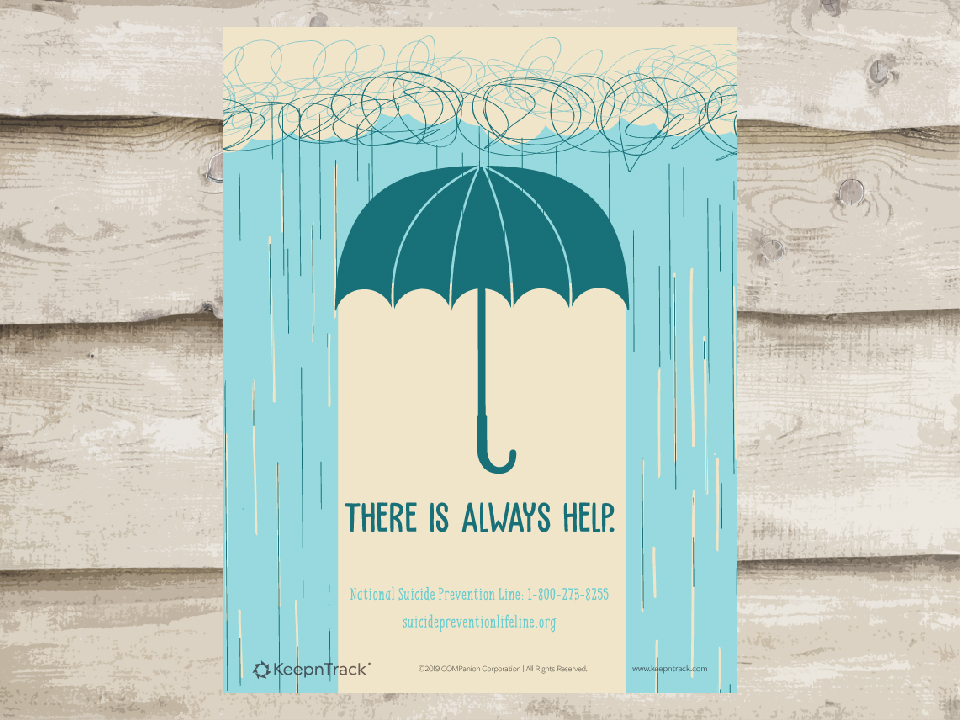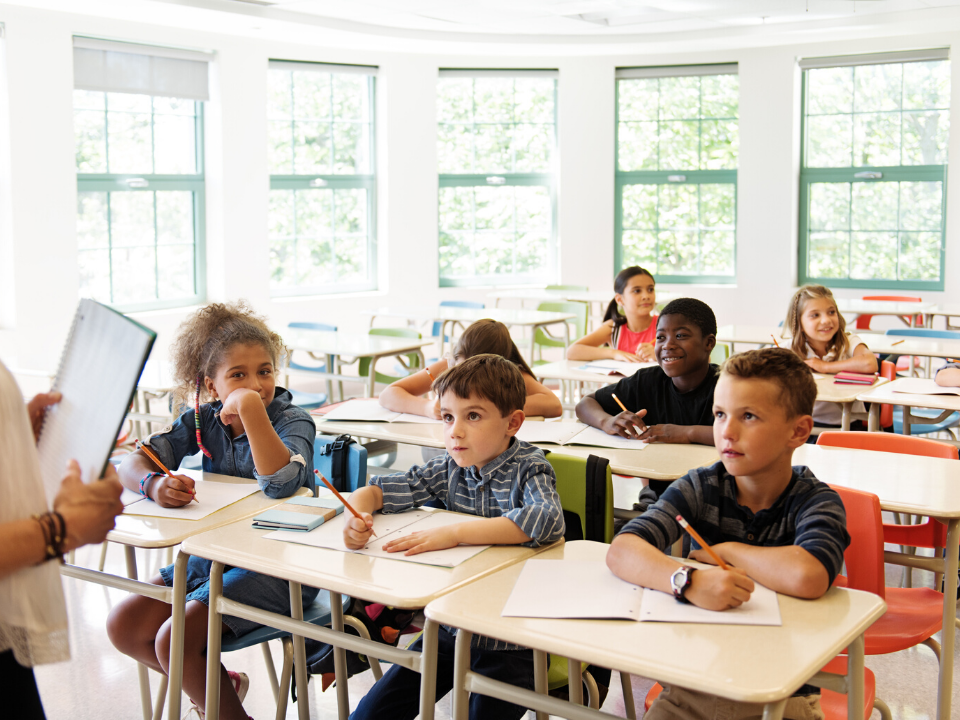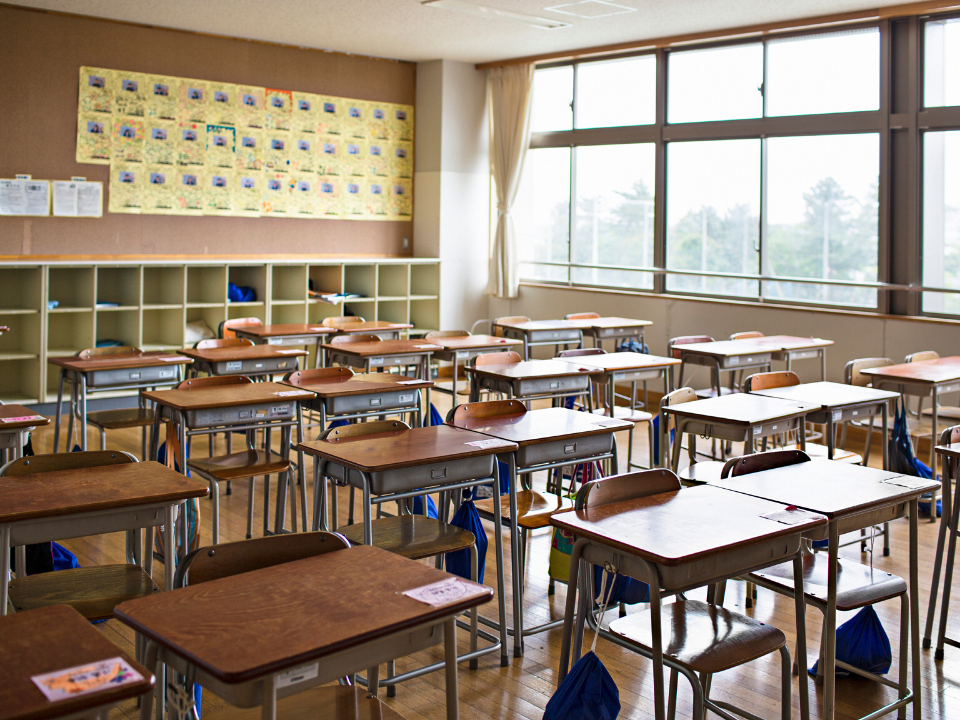
7 Things School Leaders Should Stop Doing
August 23, 2019
October is National Bullying Prevention Month
September 28, 2019Creating an environment where students can feel safe is a goal all educators strive to achieve. However, what if students are facing a challenge that isn’t physical? How do we help students who are at risk of suicide and mental health concerns?
There are specific, actionable steps educators can take in areas of suicide prevention, intervention, and postvention. In this article, we’ll provide suicide prevention resources to help school administrators and faculty understand the warning signs.
There are specific, actionable steps educators can take in areas of suicide prevention, intervention, and postvention. In this article, we’ll provide suicide prevention resources to help school administrators and faculty understand the warning signs.
Suicide Prevention Awareness Poster
Keepntrack’s September poster is meant to bring awareness for those who need help. Download the poster for free and check out more resources below.
National Suicide Prevention Week
September is National Suicide Prevention Awareness Month. Specifically, during the week of September 8-14, it is National Suicide Prevention Week. The American Foundation for Suicide Prevention has provided many resources for educators to watch, share, and read. Learn more about how you can take action here.Suicide Prevention in Schools
Youth spend a substantial part of their day in school under the supervision of educators. Teachers, administrators, counselors, and all other school personnel who interact with students day-to-day can play an important role in keeping them safe. Therefore, it is crucial for all school faculty to be familiar with the warning signs of suicidal behavior.Know the Warning Signs
90% of young people who die by suicide have a mental health condition at the time of death. Most of the time these conditions are untreated, under-treated, or undiagnosed. Other than mental health conditions, there are common warning signs parents and educators should be familiar with:
- Family stress/dysfunction
- Family Violence
- Recent disappointment or rejection
- Sudden decline or improvement in academic performance
- Change in interaction with friends
- Feeling humiliated in front of peers
- Substance abuse
- Victim of assault or bullying
- Talking, reading, or wring about death or suicide
- Increased inappropriate anger or rage
Role of the School
The entire school staff should work together in creating an environment where it is safe for students to share their thoughts and feelings. School administrators and counselors should be trained to intervene when a student is identified as a youth at risk. These individuals should warn/inform parents and provide recommendations and referrals to community services.Visit American Foundation for Suicide Prevention to learn more about school training and state laws.




